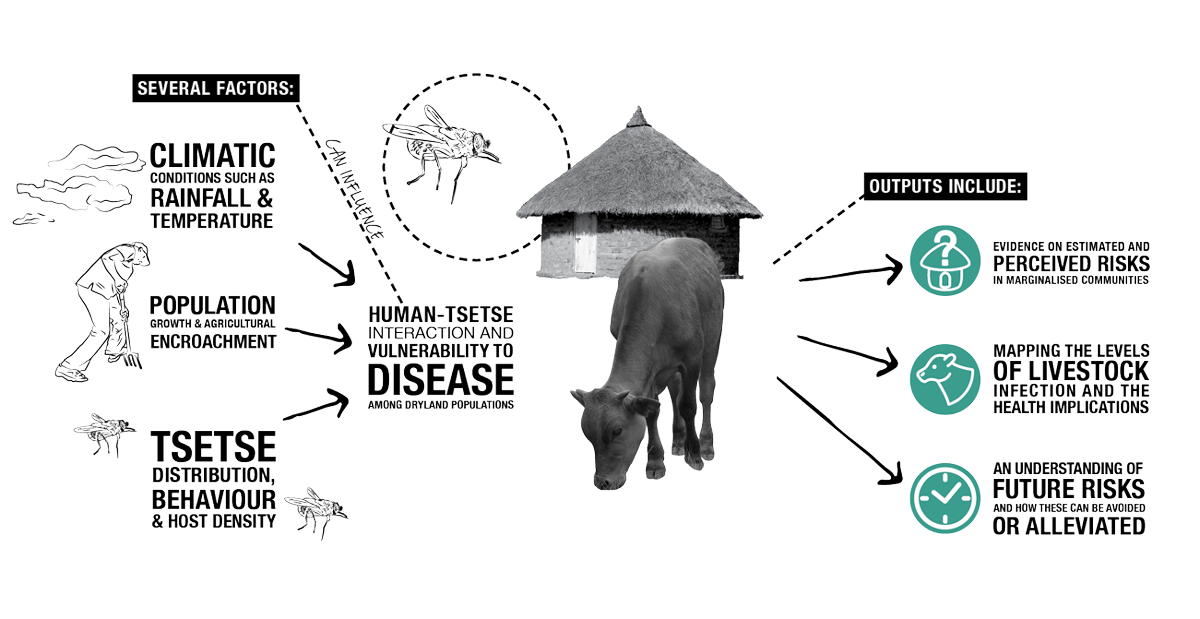
An increase in population across Africa is driving agricultural development in remote areas. Simultaneously, climate change is causing shifts in the distribution of tsetse flies. The combination of these two factors will very likely lead to increased exposure of marginalised people in remote areas to tsetse-transmitted trypanosomes.
This study brings together climatologists, entomologists, sociologists and data modellers to understand how changes in climate and land use affect the spread of Human African trypanosomiasis (HAT). We investigate broad patterns by combining insights from field data of man-fly and man-disease from sites in Tanzania and Zimbabwe. Outputs include determining the predicted and perceived risks of trypanosome infection in marginalised communities, mapping the levels of livestock infection, and understanding future risks and how these can be avoided or alleviated.